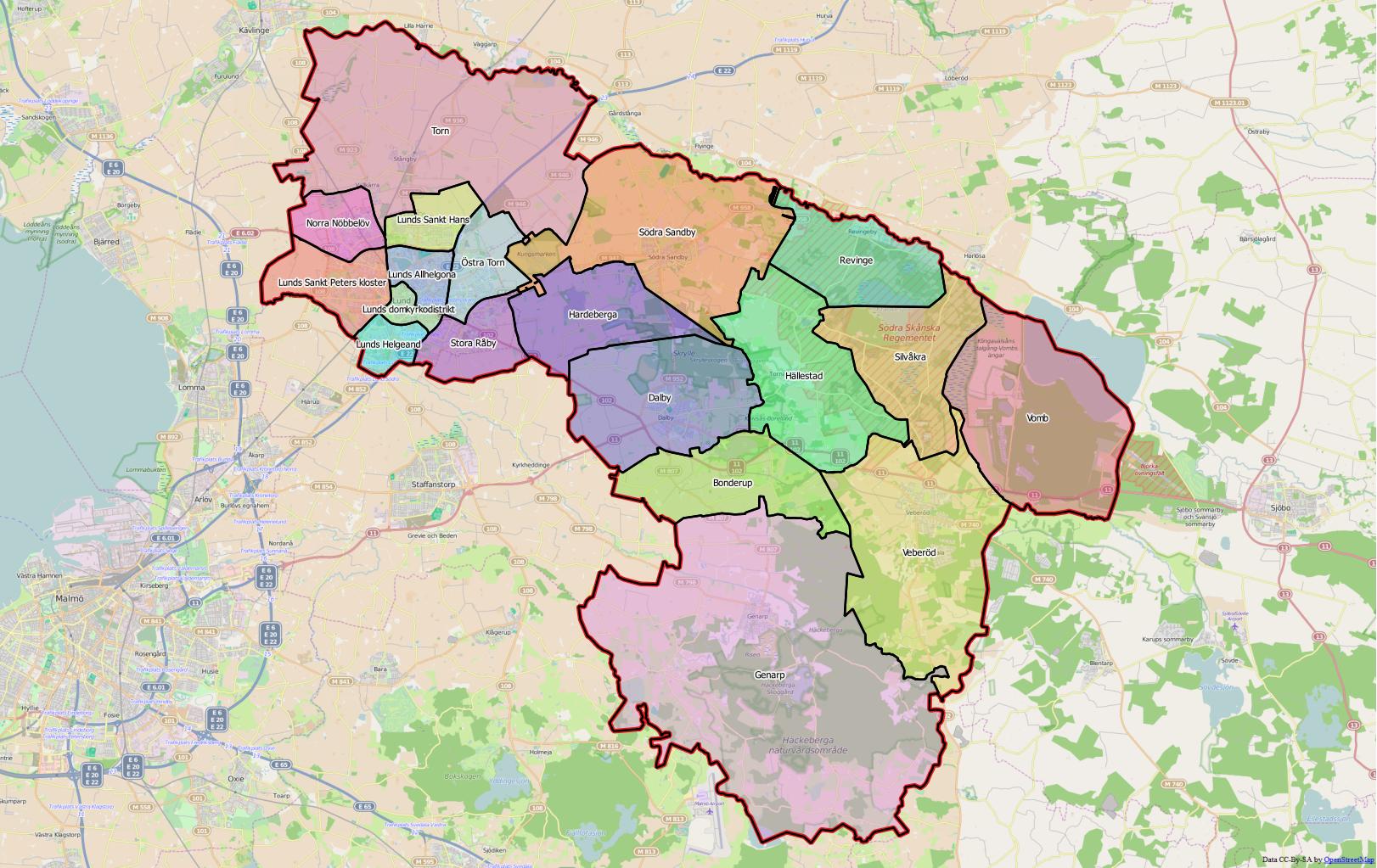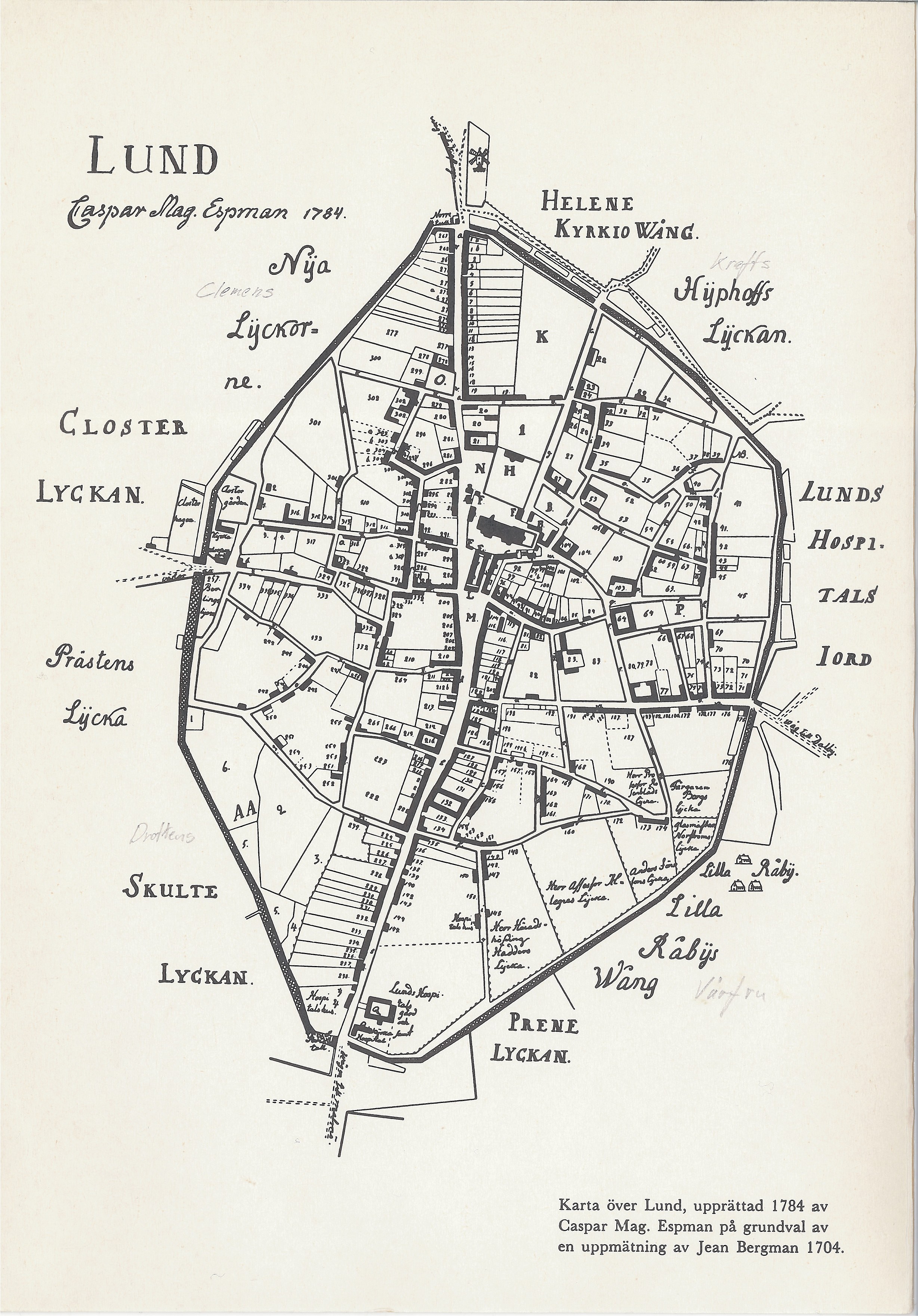|
Lundagård (park)
Lundagård is a park located in Lund, Sweden. It is situated between the Lund University Main Building in the North, and Lund Cathedral in the South with Kungshuset in between. Lundagård was originally the name of the archbishop's fortress built in the early 12th century just north of Lund Cathedral. For a long time a walled garden separated "town" from "gown". Today, the one remaining gate (of the original three) is the entrance to the '' Kulturen'' museum. The park known today was designed in 1745 by the Royal architect Carl Hårleman and originally included a botanical garden. Kungshuset, built in 1584 as a residence by the Danish king, later became the first main building of Lund University. As the university expanded the botanical garden was replaced by ''Universitetsplatsen'' in the 1880s and the new university building, located just north of Kungshuset. Other buildings in Lundagård are the , the Lund University Historical Museum and Palaestra et Odeum. '' Tegnér ... [...More Info...] [...Related Items...] OR: [Wikipedia] [Google] [Baidu] |
Lund University
, motto = Ad utrumque , mottoeng = Prepared for both , established = , type = Public research university , budget = SEK 9 billion Facts and figures Lund University web site. , head_label = Vice Chancellor , head = Erik Renström , academic_staff = 4,780 (2022) (academic staff, researchers and employed research students) , administrative_staff = 2,890 (2022) , students = 46 000 (29 000 full-time equivalents) [...More Info...] [...Related Items...] OR: [Wikipedia] [Google] [Baidu] |
Runestone
A runestone is typically a raised stone with a runic inscription, but the term can also be applied to inscriptions on boulders and on bedrock. The tradition began in the 4th century and lasted into the 12th century, but most of the runestones date from the late Viking Age. Most runestones are located in Scandinavia, but there are also scattered runestones in locations that were visited by Norsemen during the Viking Age. Runestones are often memorials to dead men. Runestones were usually brightly coloured when erected, though this is no longer evident as the colour has worn off. The vast majority of runestones are found in Sweden. History The tradition of raising stones that had runic inscriptions first appeared in the 4th and 5th century, in Norway and Sweden, and these early runestones were usually placed next to graves. The earliest Danish runestones appeared in the 8th and 9th centuries, and there are about 50 runestones from the Migration Period in Scandinavia. Most runeston ... [...More Info...] [...Related Items...] OR: [Wikipedia] [Google] [Baidu] |
Esaias Tegnér
Esaias Tegnér (; – ) was a Swedish writer, professor of the Greek language, and bishop. He was during the 19th century regarded as the father of modern poetry in Sweden, mainly through the national romantic epic '' Frithjof's Saga''. He has been called Sweden's first modern man. Much is known about him, and he also wrote openly about himself. Early life His father was a pastor, and his grandparents on both sides were peasants. His father, whose name had been Esaias Lucasson, took the surname of Tegnérus—altered by his fifth son, the poet, to Tegnér—from the village of Tegnaby in the province of Småland, where he was born. In 1792 Tegnérus died. In 1799 Esaias Tegnér, hitherto educated in the country, entered Lund University, where he graduated in philosophy in 1802, and continued as tutor until 1810, when he was elected Greek lecturer. In 1806 he married Anna Maria Gustava Myhrman, to whom he had been attached since his earliest youth. In 1812 he was named profess ... [...More Info...] [...Related Items...] OR: [Wikipedia] [Google] [Baidu] |
Lund Municipality
Lund Municipality ( sv, Lunds kommun) is a municipality in Scania County, southern Sweden. Its seat is the city of Lund. As most municipalities in Sweden, the territory of municipality consists of many former local government units, united in a series of amalgamations. The number of original entities (as of 1863) is 22. At the time of the nationwide municipal reform of 1952 the number had been reduced to six. In 1967 the rural municipality ''Torn'' (itself created in 1952) was added to Lund. The ''City of Lund'' was made a unitary municipality in 1971 and amalgamated with ''Dalby'', ''Genarp'', ''Södra Sandby'' and ''Veberöd'' in 1974 completing the process. Since 2016, the municipality is subdivided into 16 districts for the purposes of population and land registration. Dalby Söderskog, one of Sweden's national parks, is located within the municipality near Dalby. Municipal bird of Lund is Eurasian penduline tit. Localities There are nine urban areas in Lund Municip ... [...More Info...] [...Related Items...] OR: [Wikipedia] [Google] [Baidu] |
Palaestra Et Odeum
A palaestra ( or ; also (chiefly British) palestra; grc-gre, παλαίστρα) was any site of an ancient Greek wrestling school. Events requiring little space, such as boxing and wrestling, took place there. Palaestrae functioned both independently and as a part of public gymnasia; a palaestra could exist without a gymnasium, but no gymnasium existed without a palaestra. Etymology Compare Ancient Greek ''palaiein'' - "to wrestle" and ''palē'' - "wrestling". Palaestrophylax or palaistrophylax ( el, παλαιστροφύλαξ), meaning “palaestra guard”, was the guardian or the director of a Palaestra. Architecture Greek The architecture of the palaestra, although allowing for some variation, followed a distinct, standard plan. The palaestra essentially consisted of a rectangular court surrounded by colonnades with adjoining rooms. These rooms might house a variety of functions: bathing, ball playing, undressing and storage of clothes, seating for socializing, o ... [...More Info...] [...Related Items...] OR: [Wikipedia] [Google] [Baidu] |
Lund University Historical Museum
Lund (, , ) is a city in the southern Swedish province of Scania, across the Öresund strait from Copenhagen. The town had 91,940 inhabitants out of a municipal total of 121,510 . It is the seat of Lund Municipality, Scania County. The Öresund Region, which includes Lund, is home to more than 4.1 million people. Archeologists date the foundation of Lund to around 990, when Scania was part of Denmark. From 1103 it was the seat of the Catholic Metropolitan Archdiocese of Lund, and the towering Lund Cathedral, built circa 1090–1145, still stands at the centre of the town. Denmark ceded the city to Sweden in the Treaty of Roskilde in 1658, and its status as part of Sweden was formalised in 1720. Lund University, established in 1666, is one of Scandinavia's oldest and largest institutions for education and research.Lund University , ''Th ... [...More Info...] [...Related Items...] OR: [Wikipedia] [Google] [Baidu] |
AF Borgen
AF Borgen, originally known as Akademiska Föreningens Stora Sal, is the house of The Academic Society in Lund, Sweden, constructed in 1848, situated opposite the University Main Building in Lundagård. AF Borgen houses a great hall, which has held concerts by artists such as Depeche Mode, Phil Lynott, Accept and Uriah Heep Uriah Heep may refer to: * Uriah Heep (character), a character in the Charles Dickens novel ''David Copperfield'' *Uriah Heep (band), a British rock band active since 1969 *''Uriah Heep Live ''Uriah Heep Live'' is a double live album by Britis .... References Lund University Public universities Buildings and structures in Lund Tourist attractions in Lund {{Sweden-struct-stub ... [...More Info...] [...Related Items...] OR: [Wikipedia] [Google] [Baidu] |
National Property Board Of Sweden
The National Property Board of Sweden ( sv, Statens fastighetsverk, SFV) is a Swedish State administrative authority, organised under the Ministry of Finance. SFV is responsible for managing a portion of the real property assets owned by the State. The portfolio consists of more than 2,300 properties, or approximately 3,000 buildings; among them a number of castles, museums, theatres, historic fortifications, ministry buildings, embassies, county residences and parks. History SFV was established in 1993, after the National Board of Public Building ( sv, Byggnadsstyrelsen) split into several smaller units, including Akademiska Hus, Vasakronan and SFV. The agency took over the responsibility for a portion of the State's real estate portfolio; mostly property of particularly historical value, for which there was a particular need for careful long-term management. Organisation The National Property Board Sweden is organised into seven units and seven property areas. The head o ... [...More Info...] [...Related Items...] OR: [Wikipedia] [Google] [Baidu] |
Lund
Lund (, , ) is a city in the southern Swedish provinces of Sweden, province of Scania, across the Øresund, Öresund strait from Copenhagen. The town had 91,940 inhabitants out of a municipal total of 121,510 . It is the seat of Lund Municipality, Scania County. The Øresund Region, Öresund Region, which includes Lund, is home to more than 4.1 million people. Archeologists date the foundation of Lund to around 990, when Scania was part of Denmark. From 1103 it was the seat of the Catholic Metropolitan Archdiocese of Lund, and the towering Lund Cathedral, built circa 1090–1145, still stands at the centre of the town. Denmark ceded the city to Sweden in the Treaty of Roskilde in 1658, and its status as part of Sweden was formalised in 1720. Lund University, established in 1666, is one of Scandinavia's oldest and largest institutions for education and research. [...More Info...] [...Related Items...] OR: [Wikipedia] [Google] [Baidu] |

.jpg)
%2C_titelillustration.png)



